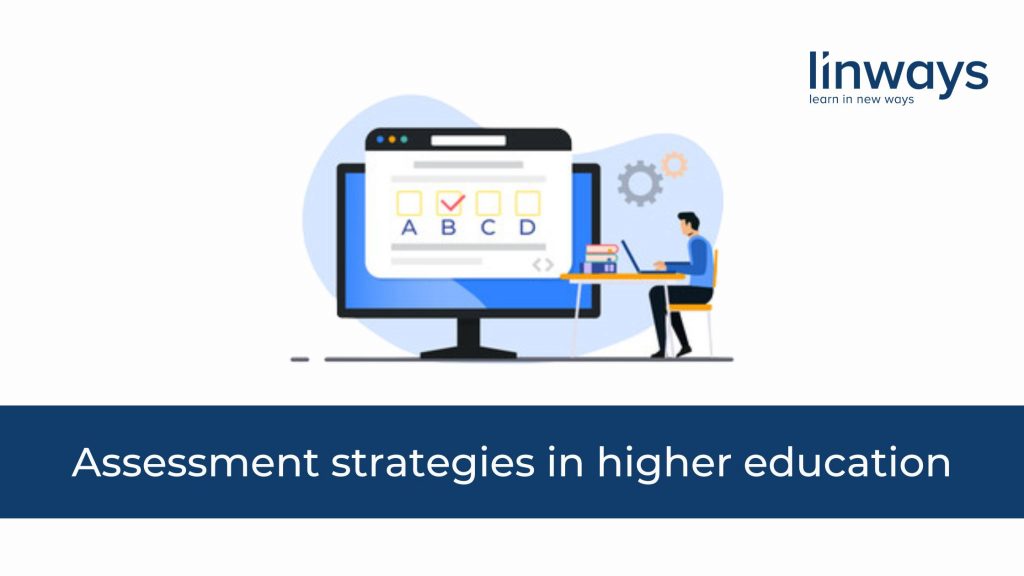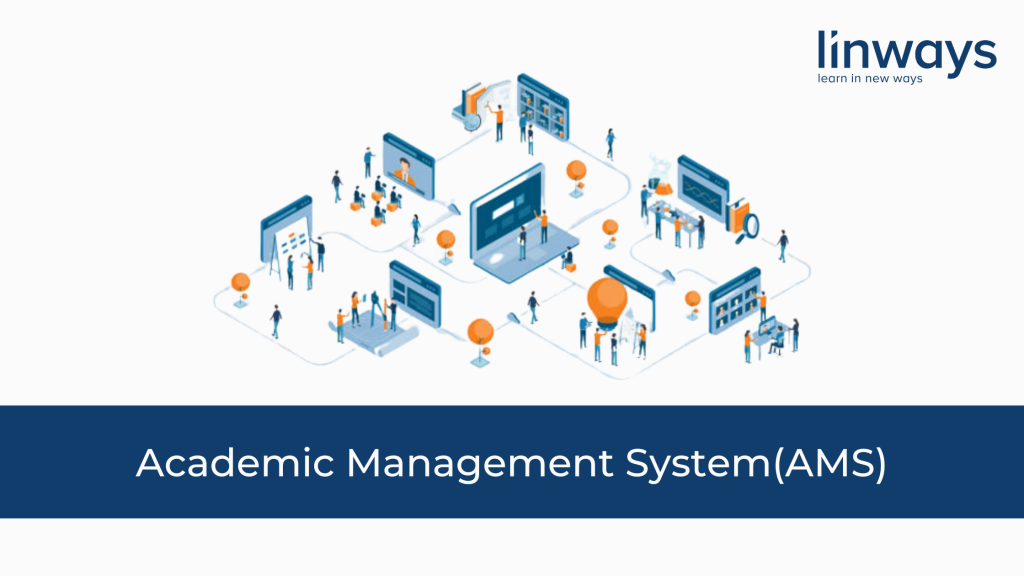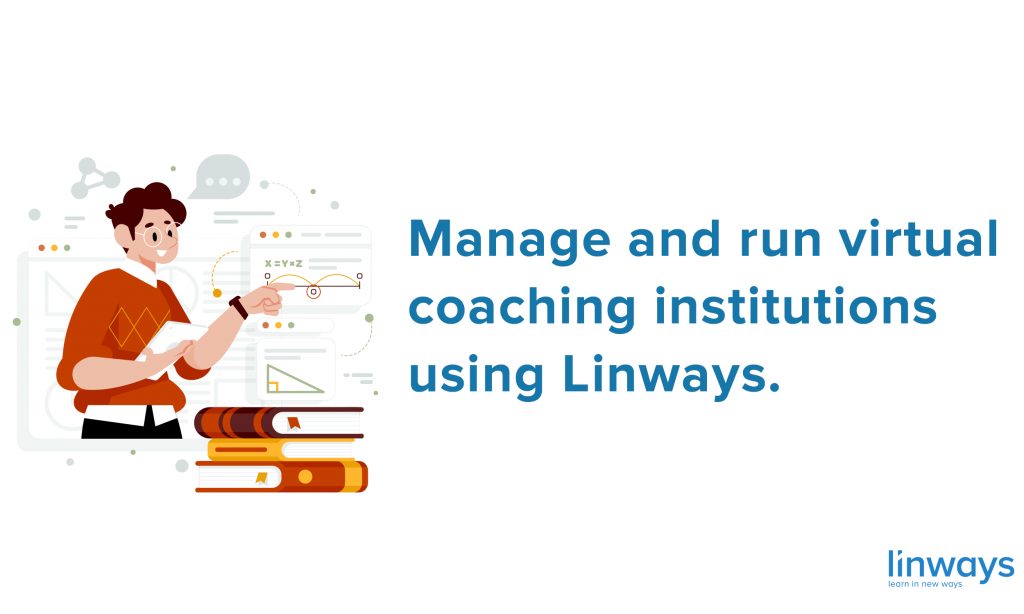
What can be done to accommodate all types of students with outcome-based education and Bloom’s taxonomy?
Courtesy
Firstly, we would like to thank all the educators who have contributed to building the Linways platform. Every time we interact with them, we learn something new.
Introduction
When it comes to higher education or any education, each student comes with their own unique set of needs and abilities, and it is up to the educational institution to cater to those needs. To do so, they need to have a proper assessment strategy in place.
In today’s examination system, when we consider the bloom taxonomy, bottom-level memorization occupies a dominant place, while comprehension, application, analysis, synthesis, and evaluation are of less importance.
In most cases, this system isolates students from the quest for knowledge, the excitement of discovery, and the joy of learning

Scenarios and gaps currently being faced
Universities and colleges in India have begun adopting the OBE framework for their programs, but the focus is mainly on integrating curriculum components with program outcomes and obtaining point attainment at the course level. In the absence of a clear mapping between program outcomes and assessment tools, student achievement of program outcomes is inaccurate and unreliable. The lack of this connection makes the whole exercise ineffective.
Also, the present examination questions are more focused on lower cognitive skills. Conscious efforts need to be made to bring application skills or higher cognitive skills to the assessment. It is recommended by AICET in its assessment guidelines that “at institution/ University level, upper limit need to arrive for lower order skills (for example, no more than 40% weightage for knowledge-oriented questions)”.
Why it is important for success for students and for institutions
The industry is more interested in professional skills than disciplinary knowledge. Further development of the subject requires disciplinary knowledge as well. Both need to be addressed.
How can we address this?
It is time to focus on both skill-based learning and lifelong learning. One way to assess students effectively is by using outcome-based education. This approach focuses on what students can achieve at the end of a course, as well as their progress after each assessment. Additionally, Bloom’s taxonomy can be used to create learning objectives aligned with the course’s outcomes. Using these two methods together, educational institutions can create an assessment strategy that accommodates all students.
From the curriculum design to the program outcomes, the objective should be clear. In addition, it is advisable to develop assessment plans for each course in the program that makes clear the following: Alignment of assessment with learning outcomes, Level of learning (cognitive) students are expected to achieve, and Assessment Methods to be used. An effective way to achieve accuracy is to align examination questions/assessments with COs and POs. Depending on the nature of the course, different cognitive levels may also be given different weights in question papers.
Written examinations alone will not suffice to assess student learning in courses where course outcomes (COs) cover a wide range of expectations. To ensure that assessment methods match learning outcomes, a variety of assessment methods should be employed e.g., Quizzes, Seminars, discussions, term papers, open-ended problem-solving assignments, course/lab project rubrics, portfolios, providing Rubrics, etc.
By combining outcome-based education and Bloom’s taxonomy, higher education institutions can create an effective assessment strategy to accommodate all students. Outcome-based assessment will ensure that all students are assessed based on the same criteria, while Bloom’s taxonomy will help teachers evaluate student learning more comprehensively. By using these two tools, higher education institutions can ensure that all students get the most out of their higher education experience.
To design a proper assessment strategy, let’s look two broad assessment approaches: Formative assessments and Summative assessments.
Formative Assessments: Formative assessments help to measure a student’s progress on an ongoing basis and can be used to identify areas of strength or weakness. They can also help teachers adjust their teaching methods or modify the course material to better meet the needs of the class.
Benefits of Formative assessments:
- Provides ongoing feedback: Formative assessments allow students to receive immediate feedback on their learning and performance throughout the course, helping them identify areas for improvement and focus their study efforts.
- Enhances learning: Formative assessment helps to improve student learning by providing an opportunity for students to practice and refine their skills without the pressure of a “test.”
- Increases motivation: By providing students with regular, timely feedback, formative assessment can help to increase student motivation and engagement.
Examples of formative assessments:
Observations, Peer and self-assessments, Quizzes, Journals, Assignments, Student presentations, Projects, Group activities, Reflective writing, Essays, and Discussion boards or classroom discussions, Open-ended experiments in laboratories.
Summative Assessment: Summative assessments are used to evaluate a student’s learning at the end of a unit or lesson. They provide a measure of the student’s learning and can be used to compare different students’ learning.
Benefits of Summative Assessment:
- Assesses learning: Summative assessment allows instructors to evaluate students’ learning and performance at the end of a course or unit, giving them a better understanding of how well their students are doing.
- Encourages mastery: Summative assessments provide students with a goal to strive for and encourage them to practice and master the material to achieve success.
- Measures progress: By providing a baseline assessment at the start and end of the course, summative assessments can help instructors measure students’ progress and identify areas for improvement.
Examples of Summative assessments:
Midterm exams, Final exams, Research papers, Case studies, Portfolios, Projects, Essays, Performance tasks, and Standardized tests
Both of these types of assessments are crucial in supporting current and future students in their learning.
Assessing Students in Higher Education
There is a variety of tools, each with its own advantages and disadvantages. The type of compendium to be used for a particular program should be carefully chosen based on its nature, objectives, and available resources. To categorize different types of assessment tools, the UGC assessment guidelines use four categories.
- Written mode
- Oral mode
- Practical mode
- Integrated Mode
Rather than too much focus on written exams, it is good to incorporate the above-mentioned assessments in the curriculum.
Internship experiences, adding MOOCs, and Co-Curricular experiences are some other methods to assess students.
Rubric-based evaluation
In addition to providing a transparent and inspiring guide for learning, rubric-based evaluation is also very important.
To understand the complete potential of rubrics, check out the blog: The ultimate guide to Rubrics for higher education.
Incorporate technology: How Linways Can Help In This
In order to achieve this goal, Linways offers a comprehensive assessment module that can assist institutions with modifying existing assessments and executing new ones using OBE.
Linways provides institutions with the ability to build curriculum, execute it with CBCS modules, and plan instruction models with our assessment builder modules, as well as map question-level attainments easily.
Linways provides student-level attainment data, which can be used to understand individual student performance, and this can lead to personalized learning.
Conclusion
A more standardized and uniform assessment strategy based on outcome-based education and Bloom’s taxonomy can better accommodate all types of students in higher education. This would allow for a more level playing field in which all students have a fair chance at success. It would also promote higher-level thinking and problem-solving skills, which are essential for success in college and beyond.
If you want to learn more about OBE and Bloom’s taxonomy, I suggest you can go through our previous blogs
Outcome-Based Education: Everything you need to know about OBE system
Bloom’s taxonomy- An introduction

-Mr. Bastin Thomas, is the founder and CEO
of Linways




